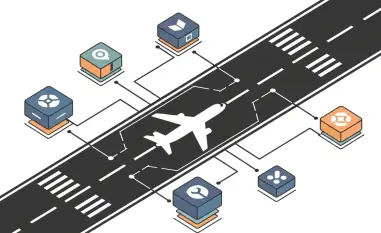Overview of Malaysia’s Tech Landscape
Imagine a nation where digital transactions are as commonplace as morning coffee, yet the specter of cyber threats looms over every click, placing Malaysia at a critical juncture in 2025 as it navigates a rapidly transforming tech landscape. The digital economy is flourishing, driven by advancements in artificial intelligence (AI), cybersecurity, and widespread internet adoption. Government bodies like the National Cyber Security Agency (NACSA) and the National AI Office (NAIO) are at the forefront, steering policies to safeguard national interests while fostering innovation. Private sector giants, alongside startups, contribute significantly to this ecosystem, creating a vibrant hub of technological progress.
This dynamic environment positions Malaysia as a competitive player in the global digital economy. Key areas such as AI integration in public services and robust cybersecurity frameworks are pivotal to this growth. However, the challenge lies in ensuring trust and safety amid such rapid expansion. Tech governance has become the linchpin, aiming to harmonize the drive for cutting-edge solutions with the need to protect citizens and infrastructure from emerging risks.
The significance of these efforts cannot be overstated. As digital platforms permeate everyday life, from banking to governance, Malaysia’s ability to balance innovation with accountability will determine its standing on the world stage. This intricate dance between progress and protection sets the stage for a deeper exploration of the forces shaping the nation’s technological future.
Key Trends and Market Dynamics
Emerging Technologies and Policy Shifts
Malaysia’s tech governance is being reshaped by groundbreaking trends that reflect both global influences and local priorities. Quantum-safe infrastructure is gaining traction as a defense against future cyber threats, while AI adoption is transforming sectors from healthcare to logistics. Cybersecurity enhancements remain a top focus, with policies evolving to address sophisticated attacks. Consumer behavior is also shifting, with a marked increase in reliance on digital platforms for everything from shopping to remote work, alongside a growing gig economy workforce seeking flexible opportunities.
Government initiatives play a crucial role in driving these changes. The Malaysia Digital Economy Blueprint (MDEB) serves as a roadmap for digital transformation, emphasizing infrastructure and talent development. Regional cooperation under ASEAN frameworks further amplifies opportunities, fostering cross-border collaboration on cybersecurity and AI safety. These combined efforts create a fertile ground for technological advancement, though they also demand agile policy responses to keep pace with rapid shifts in the market.
Growth Projections and Performance Metrics
Data paints a promising picture of Malaysia’s digital economy, with significant growth projected through 2030. Investments in AI and cybersecurity are expected to surge, with public sector AI adoption rates showing steady increases over the next few years. Performance metrics indicate that cybersecurity measures are becoming more effective, with fewer major breaches reported in critical sectors. These indicators reflect a maturing ecosystem capable of supporting ambitious national goals.
Looking ahead, forecasts suggest that sustained policy support will be vital to maintaining this momentum. Commitments to international agreements, such as the Budapest Convention, are likely to strengthen Malaysia’s global standing in combating cybercrime. If current trends hold, the nation could see a compounded annual growth rate in digital services that outpaces many regional peers, positioning it as a leader in the ASEAN bloc by the end of the decade.
The interplay of these metrics and projections underscores a broader narrative of resilience. As Malaysia invests in both technology and the frameworks to govern it, the potential for sustainable expansion becomes increasingly tangible, provided challenges are addressed with foresight and precision.
Challenges in Tech Governance
Malaysia’s journey toward tech dominance is not without hurdles that test the balance between innovation and oversight. Enforcement disparities, such as the Cyber Security Exemption Order for certain cloud operators, raise questions about fairness and accountability in implementation. While these operators remain bound by national security laws, the lack of uniform standards can create loopholes that threaten systemic integrity.
Technological barriers also loom large, with quantum migration posing significant challenges in terms of cost and expertise. The potential misuse of AI in criminal activities adds another layer of complexity, necessitating robust safeguards that do not stifle creativity. Market-driven issues, like ensuring inclusivity for diverse gig workers, further complicate the governance landscape, as policies struggle to keep up with the varied needs of this growing workforce.
Addressing these obstacles requires innovative strategies. Strengthening oversight bodies to ensure consistent enforcement, alongside fostering public-private partnerships, could mitigate many risks. Additionally, investing in education and infrastructure to support quantum transitions and AI ethics will be crucial to building a tech ecosystem that is both advanced and equitable, serving as a model for others in the region.
Regulatory Framework and Compliance
The legal backbone of Malaysia’s tech sector is evolving to meet the demands of a digital age. Key legislation, including a new Cybercrime Bill and amendments to the Communications and Multimedia Act (CMA), aims to modernize the fight against digital threats with enhanced investigative powers. The anticipated Gig Worker’s Bill, set for tabling soon, promises to redefine protections and earnings structures for a vital segment of the economy, addressing long-standing gaps in labor rights.
Compliance frameworks are equally critical in shaping industry practices. The AI Adaptation Regulatory Framework, alongside guidelines for public sector AI use, establishes clear ethical and operational boundaries for technology deployment. The National Cyber Security Strategy, spanning from now to 2030, reinforces security protocols, mandating stricter measures for critical infrastructure protection and aligning with global benchmarks like the Budapest Convention.
This regulatory environment reflects a commitment to both innovation and responsibility. By harmonizing local laws with international standards, Malaysia ensures that its tech sector remains competitive while prioritizing safety. The ongoing refinement of these policies will be essential to maintaining trust among stakeholders, from corporations to individual users navigating an increasingly digital world.
Future Outlook for Malaysia’s Tech Ecosystem
Emerging technologies are poised to redefine Malaysia’s tech landscape in profound ways. Quantum cryptography, for instance, holds transformative potential for sectors like banking and telecommunications, offering unprecedented security for sensitive data. As these innovations mature, their integration into national infrastructure could set new standards for resilience against cyber threats, positioning Malaysia as a pioneer in next-generation defenses.
Potential disruptors, however, must be considered. Debates over AI ethics are intensifying, with implications for public trust and policy direction. Evolving consumer preferences, particularly a growing demand for seamless digital services, will also pressure regulators to adapt swiftly. National plans, such as the National Fourth Industrial Revolution (4IR) Policy, alongside Malaysia’s leadership in ASEAN’s 2025 Chairmanship, provide a strategic framework to navigate these shifts, emphasizing inclusivity and sustainability.
Global economic conditions and regional dynamics will further influence this trajectory. Continued investment in innovation, coupled with responsive regulatory developments, could propel Malaysia into a leadership role within the ASEAN tech sphere. Monitoring these factors closely will be key to capitalizing on growth areas while mitigating risks that could derail progress in the coming years.
Conclusion and Recommendations
Reflecting on Malaysia’s tech governance journey, it is evident that a dual focus on innovation and trust has shaped a robust digital ecosystem. The strides made in cybersecurity and AI adoption, supported by initiatives like NAIO’s AI Action Plan, have laid a strong foundation for growth. Equally, the emphasis on safety through comprehensive frameworks has fostered confidence among citizens and businesses alike, ensuring that technological advancements do not come at the expense of security.
Moving forward, actionable steps should prioritize enhancing regional collaboration under ASEAN frameworks to tackle borderless challenges like cybercrime. Policymakers are encouraged to invest heavily in talent development, creating a skilled workforce capable of driving quantum and AI innovations. Refining regulatory mechanisms to support sustainable growth, particularly in addressing gig economy disparities, will also be vital to maintaining an inclusive digital economy.
Beyond these measures, stakeholders should consider establishing dedicated platforms for public-private dialogue to anticipate emerging risks. Such collaboration could yield adaptive policies that keep pace with technological change, ensuring Malaysia remains a beacon of progress in the global tech arena. These steps, if taken with urgency, promise to solidify the nation’s standing as a leader in balancing innovation with responsibility.













